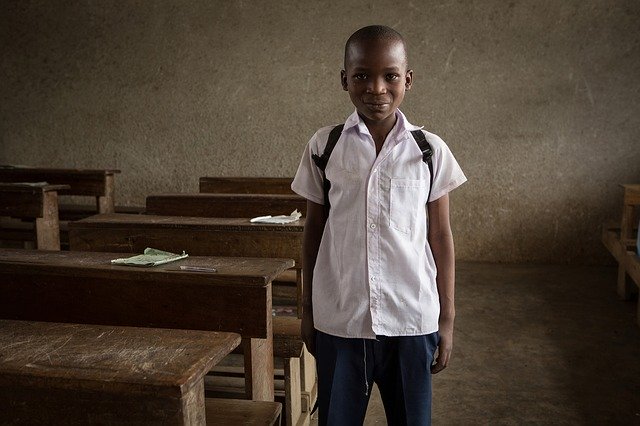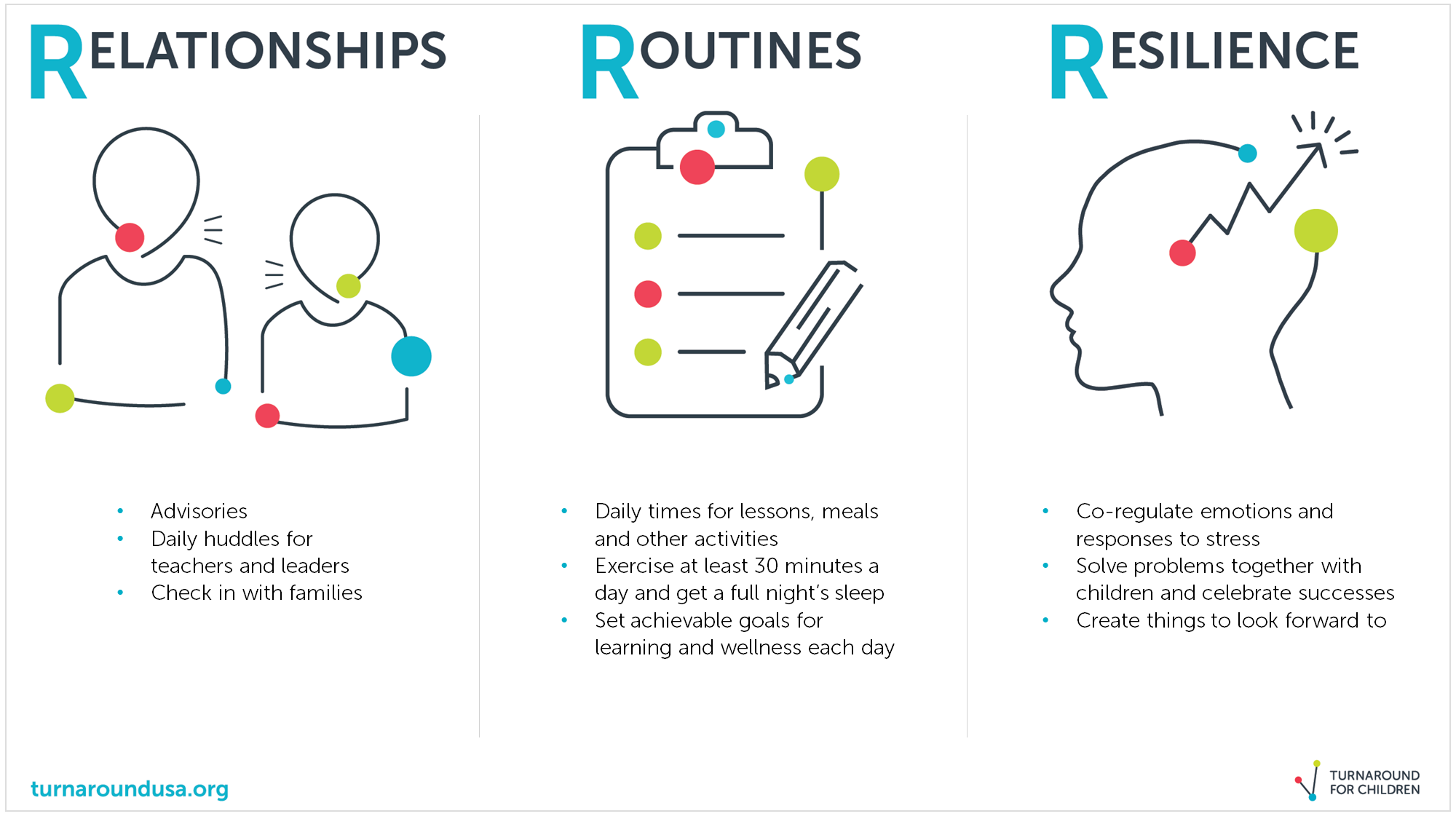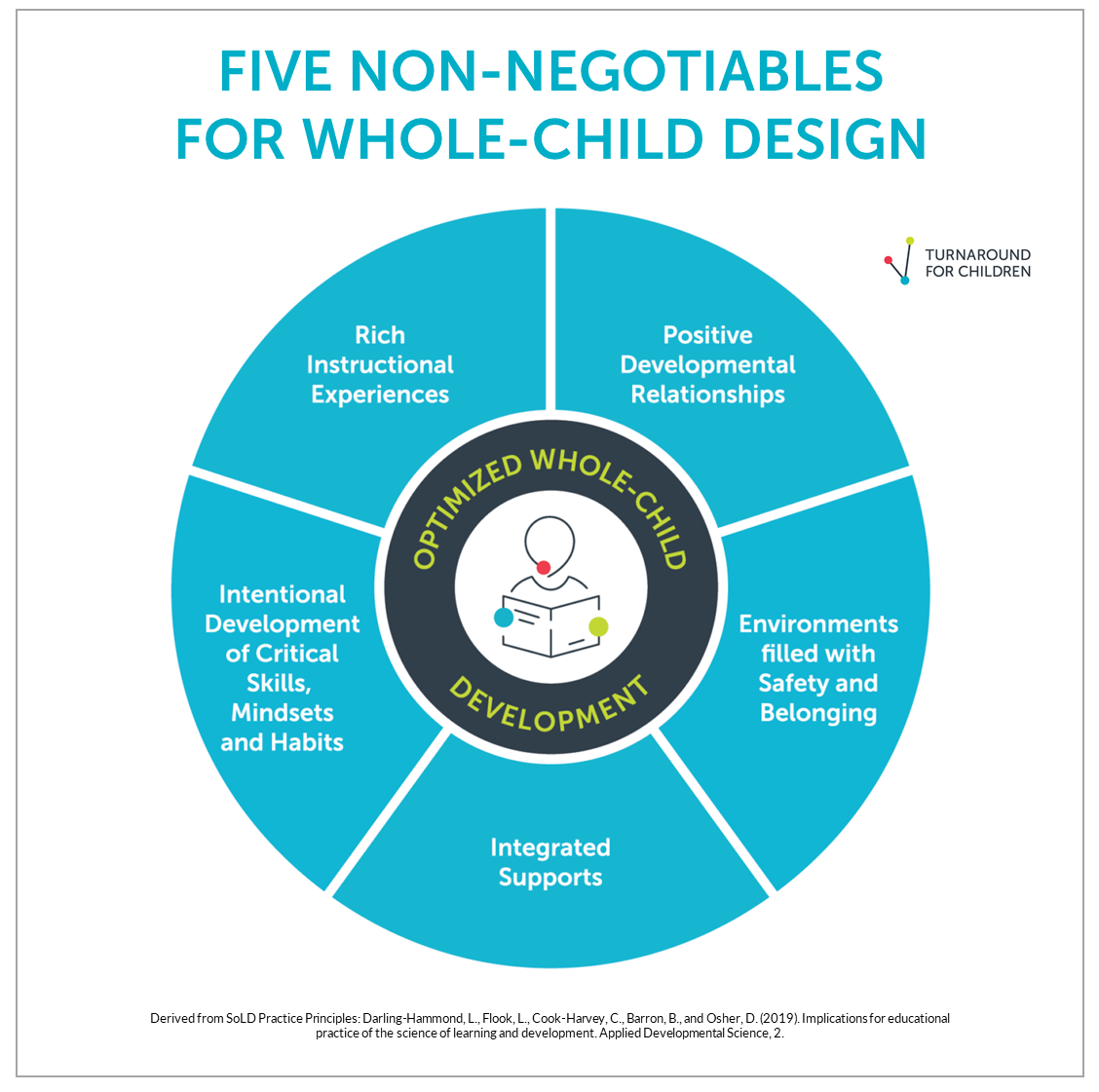Protests, police brutality, and the ongoing threat of Covid-19 have upended safety and unleashed deep-seated fury and grief across the United States, particularly in communities of color. Adults are understandably having difficulty managing their own stress and are worried about the effects of all this on their children. This was also true after the 9/11 attacks, but that terrifying event was different; it happened on one horrific day. Today, we don’t know how and when the social unrest will end. The coronavirus has been with us for weeks and will likely be with us for many months to come, with all the attendant uncertainties around health, the economy, food insecurity, and our education system. The ongoing pressures of this crisis may affect the developing brains of the young people living through it.
For years, I have worked to teach educators about the developing brain, how children’s development is malleable into adulthood, and how children and adolescents grow and learn and thrive. Nurture drives nature, and context—the environments, experiences, and relationships in our lives—drives the development of who we become.
Those lessons from the science of learning and development hold special relevance for educators deciding what they can do now and once schools reopen. I want everyone to know something that I learned in medical school: adversity doesn’t just happen to children. It happens inside their brains and bodies through the biologic mechanisms of stress.
When we experience stress, the hormone cortisol is released, producing that familiar feeling of fight, flight, or freeze. This feeling is intense when it happens, but if the stress is mild or tolerable, it’s adaptive. It makes us alert and helps us prepare for an event like a test or a performance. This is the limbic system in the brain at work—attention, concentration, focus, memory, preparation.
When children have persistently high levels of stress, and that stress is not buffered by the presence of a trusted and calm adult, something else can happen: children can get locked in that fight or flight feeling. This is toxic stress. And it helps explain why some students have difficulty paying attention and remembering things and are easily triggered by emotions. It is our emotions that drive our cognitive and learning skills, that engage us or shut us down.
But that’s not the end of the story. There’s a big upside when we turn to another hormone called oxytocin. Oxytocin hits the same structures of the brain as cortisol, yet oxytocin is more powerful because it can protect children at the cellular level. Relationships that are strong and positive cause oxytocin’s release, which helps produce feelings of trust, love, attachment, and safety. This not only helps children manage stress, but also offsets the damaging effects of cortisol and produces resilience to future stress. All this is possible because the human brain is malleable well into adulthood. That means there are opportunities, even right now, to put children on a path to learn and thrive.
Which brings me back to the crisis today. One of the challenges we face is what I call “the Covid-19 paradox.” In order to be safe and keep others safe from the virus, we must be physically distant. But that means disrupting the communities and relationships in our lives—classrooms, teachers, teams, coaches, churches, friends, extended families—that are the very connections we need to feel safe, to cope with stress, and to surmount this crisis. On top of this, there is a crisis of trust, particularly for young people of color, because of what they are witnessing: Officers who should protect them, but don’t, won’t, or can’t.
Knowing this, what can educators do today? What can parents who are helping to educate their children away from school do? We can make the world in our homes and eventually our schools places that inoculate us against the intolerable stress of the scary, uncertain world we now live in. How? By focusing on the Three Rs: relationships, routines, and resilience.
Let’s start with ideas for strengthening and maintaining relationships—oxytocin boosters —while students are at home. Virtual advisory groups and one-on-one conversations help teachers and students connect. A two-minute conversation about topics of interest to the student for ten straight days provides quick emotional support and a chance for an adult to co-regulate emotions with a youngster, so try this two-by-ten practice to strengthen relationships, especially with children who may be struggling.
To maintain a professional learning and serving community, schedule 15-minute daily huddles, as Principal John Peterson does with his staff at KIPP Bridge Academy in Oakland. And to strengthen ties to families, take a page from Turner Elementary School’s strategy in Washington, D.C. They do family-teacher check-ins, using guided questions to learn how their school community is coping and handling homework.
Schools can also encourage parents to play, clean, and cook family recipes with their children. Karina Herrera at the Chapin School in New York City does “Tasty Tuesdays,” during which her 2nd graders share breakfast concoctions over Zoom. Parents can give each child a chance to choose one new family activity every day. Students can also give to others during this crisis by making a drawing for a frontline worker or facetiming a grandparent or elderly neighbor. Even simple gestures of gratitude are a great way to stay connected.
When school reopens, school leaders can make relationship building central to their learning communities. Beyond High Schools, supported by the Tulsa Design Lab, is prioritizing advisories and mentoring to ensure students have a sense of belonging. Schools can do two-by-tens with struggling students, never withholding them for bad behavior. They can alsoloop students to faculty with whom they are especially close for more than one year to sustain important relationships.
Routines can make our home environments feel safer and calmer. Our brains are prediction machines that like order, and when our environments are orderly the brain is calmer. Use a planner, calendar, or homemade chart to showcase the daily and weekly schedule with regular times for reading, storytelling, math, and hands-on projects. Erika Leadholm, a 2nd-grade teacher at Malcolm X Elementary School in Washington, D.C., dresses up in superhero costumes to read students bedtime stories that include vocabulary and comprehension lessons. Her colleague, Erica Samuels, teaches place value while encouraging her students to reinforce their learning by “teaching” their family members and stuffed animals.
Family meetings, during which children can ask questions and talk about their fears and loss, should be on the schedule, but adults should prepare how they plan to answer in advance, using facts. Schools can encourage families to eat healthy meals together every day, exercise for at least 30 minutes, and prioritize sleep (9 hours or more for children every night). Teachers or parents can also establish mindful practices with students, such as deep breathing, journaling, quiet pacing, or meditation for 20 minutes a day.
When school reopens, the primary focus should be physical, emotional, and identity safety. Implement a tiered support system at all levels and create mental health partnerships with local providers. In the classroom, teachers can co-create norms and routines with students. And to address the stress students are experiencing, deploy cognitive unloaders; make lists and use sticky notes and note-taking templates.
Resilience is a skill, not a trait like eye color; it can be built up and honed over time. Resilience begins with learning how to regulate emotions and behaviors from role models through a process called “co-regulation.” Schools can start by curating resources for teachers and parents about stress and the brain, and how to build resilience. To do so now at home, parents can limit exposure to media and instead stay in touch with family and friends. Schools can encourage families to solve problems together, celebrate successes, and empower children to find creative solutions. And both parents and teachers should offer hope, expressing confidence that this crisis will end, but that we must also work at managing ourselves and our fears every single day.
When school reopens, apply a whole-child, integrated approach to school design with the following elements: a safe, supportive environment; strong, developmental relationships; and integrated and rigorous academic, skill, and mindset development. Settings designed with these elements at the forefront are like an ecological vaccine, rich in protective factors that ignite the developing brain, promote wellness, and protect children from the damaging effects of stress. These are the same environments that produce complex skill development and the deeper learning skills to tackle a thorny word problem, write a critical essay, or imagine a practical solution to a community challenge.
A final thought: In every story about an individual who has surmounted adversity and gone on to do amazing things, there is always a person or group of people who made that success possible. This is the power each of us carries: to be that person for a young person and for each other, in our lives at home and when we meet again at school.
Pamela Cantor, M.D., is founder and senior science advisor at Turnaround for Children. A suite of resources for Education Next readers to complement this article are available at https://www.turnaroundusa.org/resources-education-next/ using password “thrive.”
Read more from Education Next on coronavirus and Covid-19.
By: Pamela Cantor, M.D.
Title: The Stress of This Moment Might Be Hurting Kids’ Development – by Pamela Cantor, M.D.
Sourced From: www.educationnext.org/stress-of-coronavirus-might-be-hurting-kids-development-but-relationships-routines-resilience-can-help/
Published Date: Wed, 03 Jun 2020 09:00:20 +0000


